
The film montages have been produced over a seventeen-year period as a sustained collaboration between Tracey Moffatt and film editor Gary Hillberg. They have often functioned as an accompaniment to her photographic series, rather like a support act. (For example, Lip was shown along with the photographic exhibition Laudanum in 1999, and DOOMED was shown with Portraits in 2007, both at Roslyn Oxley9 Gallery in Sydney.) But here the focus is on the compilations themselves, designed and conceived by Moffatt, with Hillberg as co-creator helping to source as well as edit the cut material and bringing to the task his superb skill and meticulous attention to detail.
Astonishingly, as Hillberg notes, much of the montage work happened while he lived in Melbourne and Moffatt was resident in New York City; they collaborated by sending each other material through FedEx.[1] The disembodiment of this working process is reflective of the montage form as well as the content. By using footage in ways not originally intended, montage works can seem to come out of nowhere, ventriloquising the original. Rane Willerslev and Christian Suhr, speaking against the death of the montage as an artform, note that as an artistic intervention which reveals the “invisible” montage “retains the power to suggest fresh ways of perceiving relations between artistic expression, scholarly imagination, and social life. Its techniques for troubling common sense notions of “reality” are as powerful as ever.”[2] Montages, the exhibition, focuses primarily on such tropes, taking the extremes of familiar Hollywood cinema with its culturally ubiquitous faces and storylines, splicing and rearranging them in an alternative long-form narrative to tell other stories that may emerge. While montage is Hillberg’s craft, and the Hollywood image his passion, Moffatt’s talent for reanimating dominant tropes from the cinematic and literary archive is a powerful infiltration into the narrative.[3] The resulting collaboration is both relentless and seamless on screen; but it can also be conceived as carnage, cutting to the chase.
While montage as a medium is a departure from the rest of Moffatt’s oeuvre, primarily based on creating original tableaux scenes, the use of familiar forms, faces and scenarios as a device is a hallmark of her work. Examples of her early original film work, such as Nice Coloured Girls (1987), bring the viewer into an intimacy with archival images and texts in relation to historical representations of Aboriginal female sexuality, victimhood, violence, immorality and duplicity. Night Cries provides an alternate viewing of the Australian film Jedda (1955), reanimating the characters of the original film to provide a rereading of the relationship between the Aboriginal adoptee and her white adopted mother. Moffatt’s filmic perversion of the outback tragedy as a genre which has had so much power in the Australian settler-colonial cultural imaginary, demonstrates the strength of her engagement with existing film culture to produce a submerged narrative.
This interrogative gaze of Moffatt’s is turned on the Hollywood archive in The Full Cut. The eight montages show about ninety minutes of film in total, an impressive feat of found and edited footage, varying in length from about seven minutes in duration to up to 24 minutes. Love (2003), the longest montage, supports a dramatic and impressive narrative build. It is presents an extensive excavation of heterosexual romantic conventions in film that moves through an intense and chaotic cycle: beginning with scenes of flirtation, young love, passion and lust, and turning steadily into conflict. Following is a long cut of scenes of women throwing drinks on men, swearing, and slapping their lovers; the entire compendium peppered with misogynistic slurs in a critical homage to cinematic tropes of female hysteria. A series of scenes from Hollywood are then shown of men beating women, taken to an almost unwatchable violent crescendo, followed by scenes of the same female characters shooting and killing their male partners in revenge, but not before a good amount of begging from their menfolk – “You wouldn’t shoot me!”. The pacing and precision of this escalation is perhaps the most well-performed excavation of cinematic gendered tropes in the entire exhibition. As Hillberg has said in a recent interview[4], the title of Love proves ironic as the montage is centred around the submerged misogyny and domestic abuse narratives which saturate Hollywood cinema’s representations of romance. The dramatic ending is a source of great relief and satisfaction for the viewer.
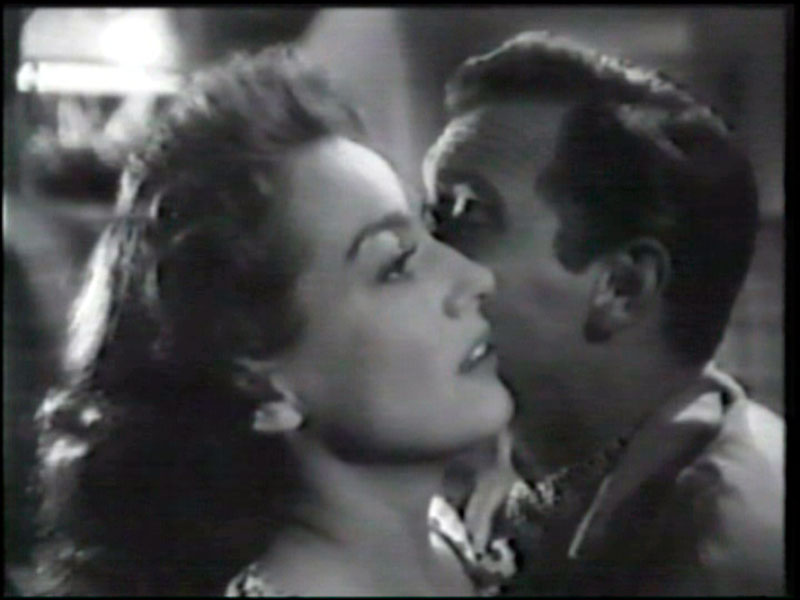
Mother (2009), at twenty minutes long, also follows a Hollywood-esque dramatic shift in the popular screen narratives, providing an innocent and loving opening, a period of angst and conflict, and a resolute ending. It begins with images of the Virgin Mary and deeply sentimental depictions of the purest mother’s love, travels through scenes of heartbreak, hatred and abandonment, and ends with joyful scenes of mothers and daughters reuniting. This is fertile ground for excavation of the often conflictual mother–daughter relationship, and the generation of second-wave feminism drawn to key texts such as Nancy Friday’s My Mother/My Self, and relationships gone seriously wrong like Joan Crawford’s daughter’s tale of abuse in Mommie Dearest. Moffatt’s oeuvre is no stranger to harrowing tales of conflicted and abused scenes of childhood, as in her two landmark series of Scarred for Life.
Moffatt’s earlier photographic work, such as Something More (1989). Up in the Sky (1997) and Laudanum (1999), presents haunting scenes of trauma and longing, exposing the shattered self in often irresolvable and unspeakable situations. By contrast, catharsis and pleasure are not denied the viewer in Montages. This is most apparent in the shootings of the perpetrators of violence in Love, but it surfaces in key moments of the other montages too. The effective timing of the cuts and sequencing is a further credit to Hillberg’s editing skills. And, as Moffatt herself said of the exhilarating pace of Lip (1999), intended to be restorative and enjoyable, “It’s OK to laugh”.[5]
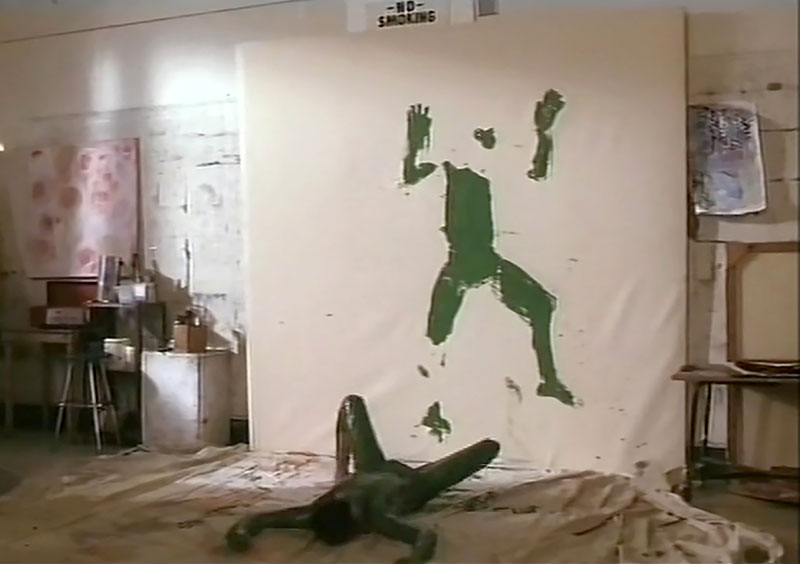
DOOMED (2007), a 14-minute-long exploration of the disaster genre, is an enjoyable compilation of extreme events as scenes of destruction. Primarily sourced from apocalyptic films of the 1990s and early 2000s (such as Twister, Independence Day, Titanic, and The Day After Tomorrow) as well as earlier screen representations of industrial catastrophe, showing planes and trains crashing into buildings, and Biblical judgement-day tropes, the montage revels in the moments before obliteration as scenes of suspended destruction. Of particular interest is the movement from earlier visions of industrial failure and disaster, through to the more recent preoccupations with alien invasion and the more current focus on weather and climate-related destruction. The apocalypse genre is rich with examples of postmodern fear. The totalising deconstruction of the physical walls of government institutions, landmark buildings, impenetrable towering skyscrapers and family homes through the various devices of alien invasion, tornadoes, floods, hail, rain, and tidal waves in DOOMED support the profound anxiety and perceived vulnerability of the nation–state to invasion, death, and natural forces.
There are many works in this exhibition that revel in playful deconstruction. The Art (2015), for example, features a delightful and lengthy series of scenes of destruction and desecration of works of art through the exploration of on-screen representations of creative processes. Fists punching through canvases, artists headbutting their works, sculptures being smashed to pieces, and canvases being cut to ribbons are cut together with scenes of self-reflective contemplation, self-portraiture and suicide. It is a high-energy piece reflecting the eroticism and exploitation of the art industry that also turns the gaze back on the critics, curators and buyers (the art market). Along with Artist (2000), made fifteen years earlier, the montages on “art” pointedly draw out themes of madness, fame, eroticism, fanaticism, absurdism and melancholy.
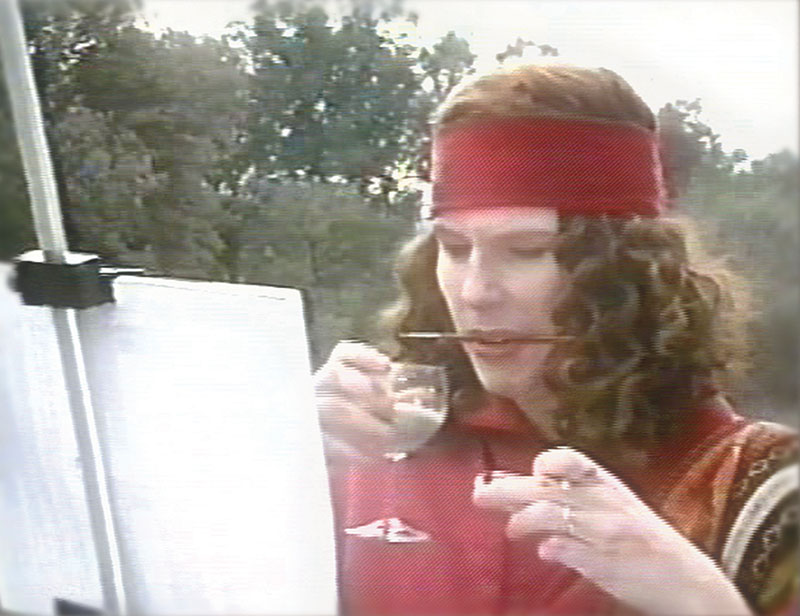
Lip (1999), as the earliest of the montages, is Moffatt and Hillberg’s homage to the trope of the black women in service giving “lip” to their white female employers, in some cases making veiled threats and in others as out-and-out revenge verbally destroying their white counterparts. Given the fact that black women in Hollywood were notoriously confined to maid or “mammy” roles, it is hard to imagine how such representations could be treated with such joyful humour. But Moffatt delights in these revealing moments which betray a kind of inner life for black woman on screen; moments that break with the tropes of subordination and servitude, otherwise so ubiquitous in cinematic representation.
Barthes’ theories of photography are useful here in terms of our general commitment to the tropes of the cinematic image arising from the studium, as a “general, enthusiastic commitment” to the image, and the punctum as the interruption; the thing which disturbs, pricks, and bruises this intention. Here the punctum as indicated by the title of the work, is this engagement in a subtly bruising or downright inflammatory “back talk” which interrupts the common conceptualisation of the silent black female labourer as subordinate, and the unintentional points of discomfort in films such as Guess Who’s Coming to Dinner and For Pete’s Sake. Moffatt clearly takes such pleasure in collating these moments when the characters became “glorious scene stealers in the true Hollywood sense. Regardless of the role, one could never not notice them”.[6]
In further extensions of this, postcolonial theorist Ali Behdad, writing about photographs of life in India under British rule, comments on the “subtle beyond, something that slips past the intentionality of the colonialist photographer and the photographed natives”, signalling the instability in the assuredness of British rule and subaltern submissiveness.[7] Moffatt has transferred this destabilising effect to the film medium, to highlight these brief moments of disruption. In Lip, the white characters (particularly the women) are presented in a distinctly unflattering light in both their conversations with their maids and peers of their own race and social class. As the work that turned into a practice to be continued, this remains a thoroughly engaging and entertaining work of masterful collation and social commentary.
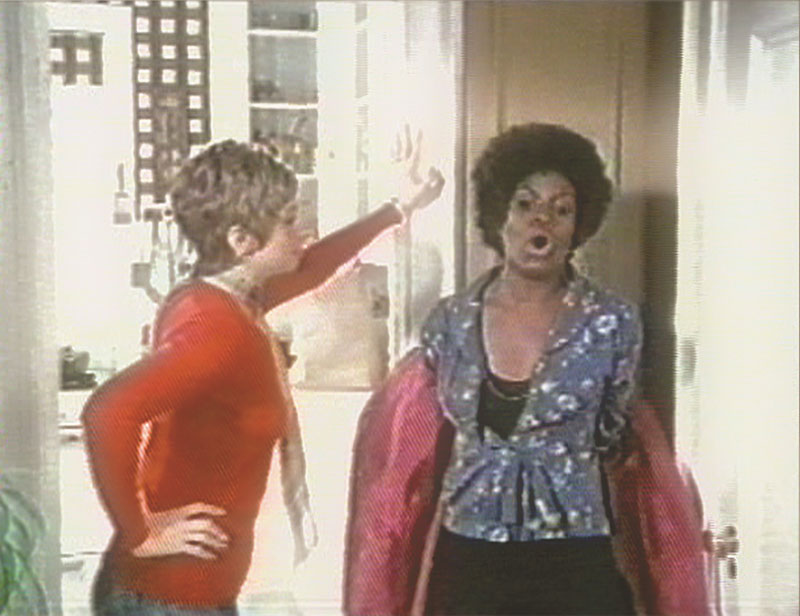
White women also become the focus of the racialised encounter in Other. Although Other is described as a reflection on screen images of the exoticised other that surround colonised peoples in film, this compilation reverses the focus to examine the invader as onlooker. In this fast-paced and edited 7-minute short, one exemplary scene from the television series Sex and the City features Kim Cattrall’s provocative character Samantha Jones invading the locker room of a football team to longingly gaze at the genitals of a black player. Set in present-day New York City, showing sexually liberated white woman in designer clothing alongside scenes of invading colonial armies and sexually predatory white men, Samantha Jones could look out of place, but doesn’t. This is the power of the montage form as Moffatt and Hillberg employ it; the images become reanimated and resignified when placed alongside one another. Eye contact is the focal point of the colonial representation of the Other, and Moffatt and Hillberg match this to exploit scenes of gazing and looking between the central protagonists and the silent native subaltern on the sidelines.
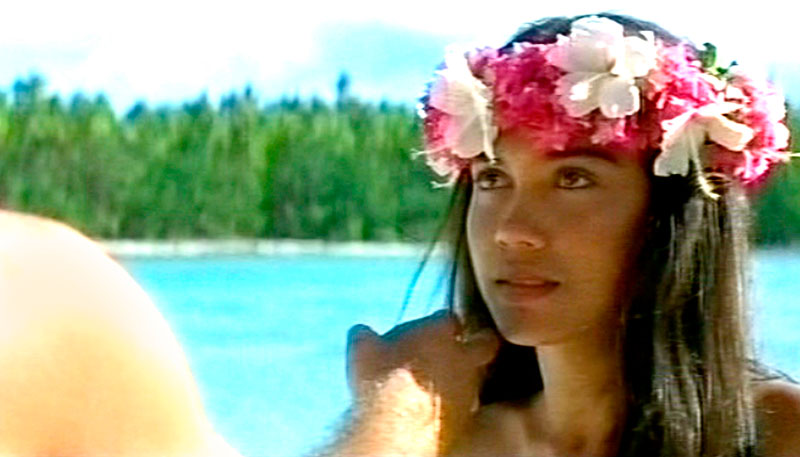
In this first exhibition of the national tour at Shepparton Art Museum, Montages is exhibited with Moffatt’s First Jobs series from 2008, reanimating existing photographic works taken between 1975 and 1984. Moffatt uses Photoshop to insert herself into the photographs, which are then printed on rice paper and painted over. These reconstructed and embellished images recount Moffatt’s own first jobs as a young adult. The process of revisiting, reconstructing and recolouring produces a lurid and hyperreal memoryscape of an early life of backbreaking labour (as she describes it): factory work, salon work, meatpacking, cleaning, and retail. The scenes are curated in a dreamlike mode, yet gesture towards a politics of class and race in their depiction of devalued labour often done by Aboriginal and migrant workers. There is an artifice and extremity in the images represented. Yet, the familiarity of the images, canonical and repetitive as they are, creates the feeling that we’ve all been here before.
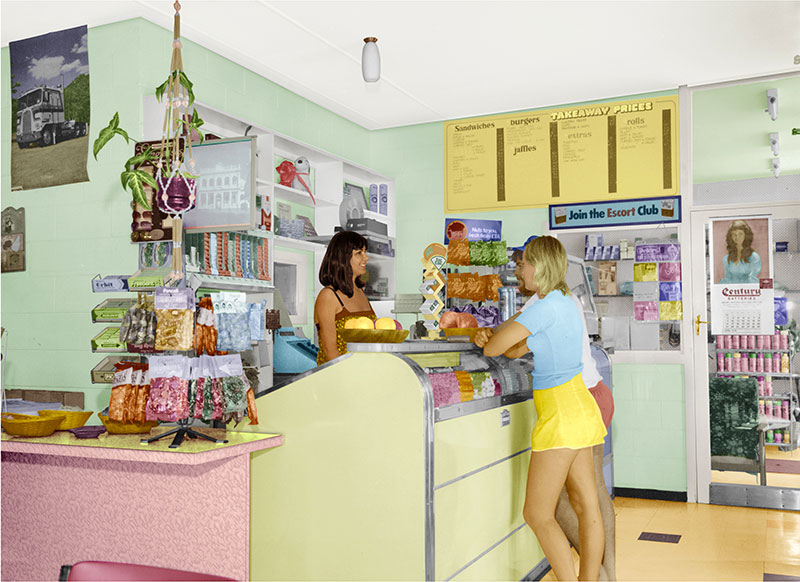
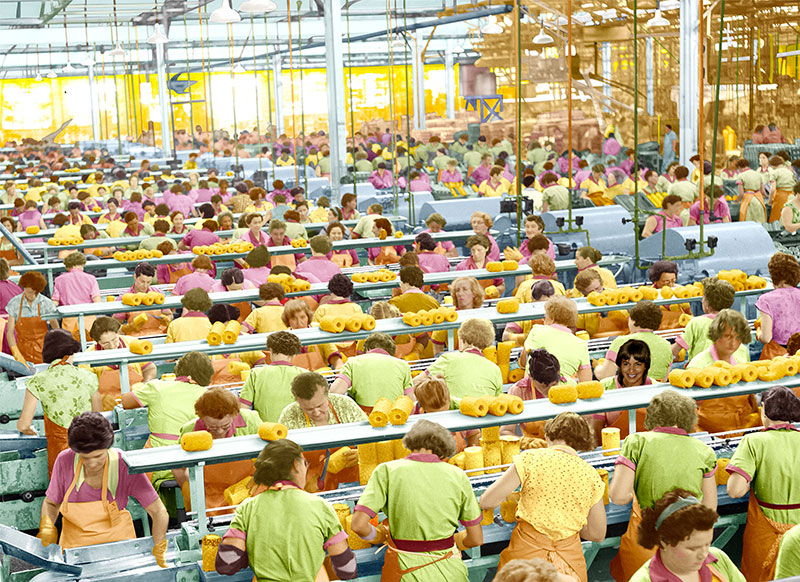
Footnotes
- ^ “Review: Gary Hillberg,” Art Smitten, Melbourne: SYN Radio, 19 February 2017: https://omny.fm/shows/art-smitten/review-gary-hillberg#description.
- ^ Christian Suhr and Rane Willerslev, Transcultural Montage, Berghahn Books, 2013.
- ^ “Review: Gary Hillberg”
- ^ “Review: Gary Hillberg”
- ^ Roslyn Oxley9 Gallery, “Tracey Moffatt, Laudanum,” media release, 14 April 1999: http://www.roslynoxley9.com.au/news/releases/1999/04/14/190/.
- ^ “Tracey Moffatt, Laudanum”
- ^ Ali Behdad, “Kipling’s ‘Other’ Narrator/Reader: Self-Exoticism and the Micropolitics of Colonial Ambivalence,” in Belated Travellers (Durham: Duke University Press, 1994), 73–92.

